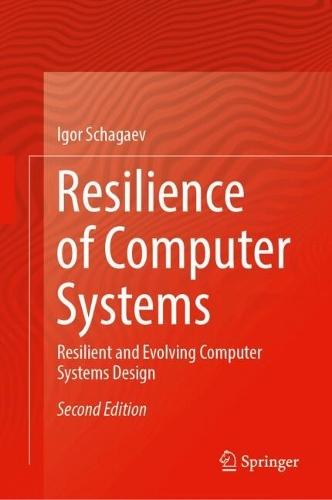Overview
This book, now in its second edition, presents a paradigm for designing new-generation resilient and evolving computer systems. Book includes key concepts, supporting theory, methods of analysis, and the synthesis of ICT with new properties of evolving functionality, as well as implementation schemes and prototyping. This book explains why new ICT applications require redesign of computer systems to address challenges of extreme reliability, high performance, and power efficiency. The second edition further develops the book’s design paradigm of resilient and adaptive computer systems, with a focus on achieving hardware resilience and fault tolerance. The book is revised throughout, with further development of theory of resilience, redundancy classification, and methodologies of application. Most notably, there is a new chapter on concurrency and parallelism—exploring hardware implementation at the level of interruption. This updated, revised, and expanded edition is of even greater use to industry professionals.
Full Product Details
Author: Igor Schagaev
Publisher: Springer
Imprint: Springer
Edition: Second Edition 2025
ISBN: 9783032009371
ISBN 10: 3032009375
Pages: 364
Publication Date: 02 October 2025
Audience:
Professional and scholarly
,
Professional & Vocational
Format: Hardback
Publisher's Status: Forthcoming
Availability: Not yet available

This item is yet to be released. You can pre-order this item and we will dispatch it to you upon its release.
Author Information
Prof. Igor Schagaev has been involved in projects related to Navy computer systems, fault-tolerant parallel satellite computer systems, and safety-critical real-time computer systems for both commercial and military aircrafts. All of these projects focused on new, primarily safety-critical ones—with innovative hardware design and specialised system software. Throughout his career, Igor has consulted and collaborated with Sukhoy Design Bureau, British Aerospace, Boeing, and Airbus. His lifelong work has resulted in advancements in hardware and system software, as well as a new theory of active system control. Time scale here speaks itself: between 1994 and 1996, collaboration with British Aerospace (Filton), 1998-1999 with Boeing (Seattle HQ, encompassing both military and commercial aircraft departments). Later, leading NASA diagnostic scientists consulted with Igor, and their joint work was presented twice at prominent FlightGlobal Forums and international air fleet exhibitions. Aerospace editors from the Wall Street Journal and the Times visited London and Brussels over the years, conducting interviews with Igor’s team and seeking advice on aviation hardware and system reliability challenges. Facultimedia (Boston), the British Computer Society, and the Institute of Analysts and Programmers invited him to deliver keynote speeches at their congresses and conferences—primarily on the subject of this book. As a result, the resilient hardware design described in the book is founded on exceptional theoretical insights and practical experience at the forefront of the field.




